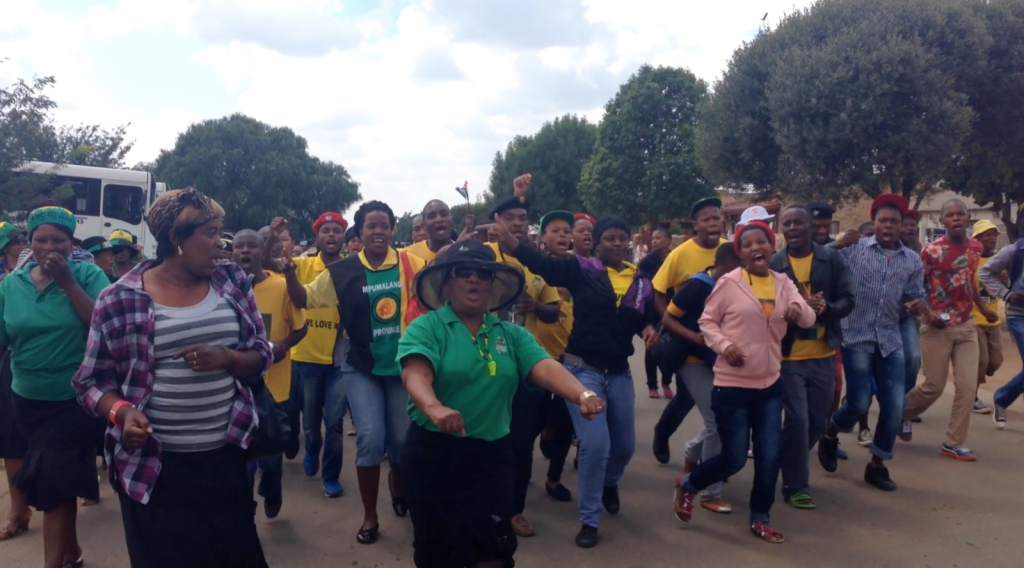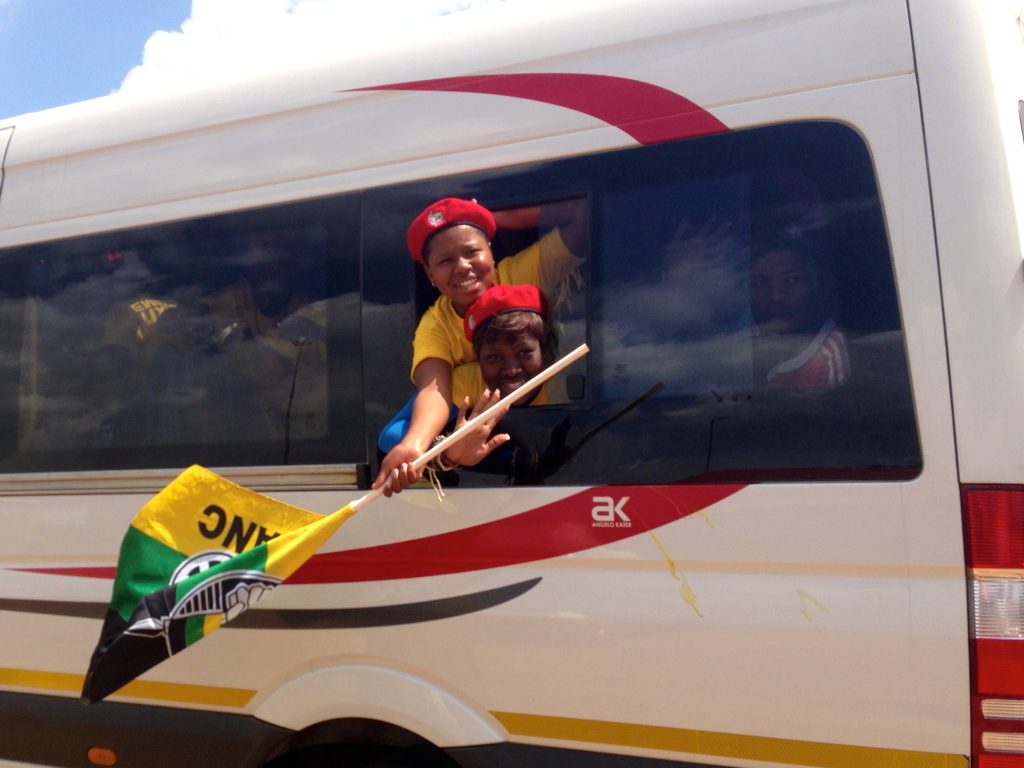This article was originally posted on the World Policy Journal and Council on Foreign Relations blogs.
By Le Chen, Janice Dean, Jesper Frant, and Rachana Kumar
We arrived in Johannesburg after 17 hours in the air, with a short, hurried stopover in London. As the airplane doors opened, the scorching 80 degree weather of South Africa’s Highveld greeted us, melting the sub-zero temperatures from recent New York winter memory. The change in weather was cheerful but, as graduate students from Columbia University’s School of International Affairs, we were more interested in the changing climate of South African democracy.
We arrived at a crucial and transitional moment in South Africa’s history, beginning on what we hope to be an important project on the country’s democratic future. Following Nelson Mandela’s death in 2013, the May 2014 elections will be a bellwether for the future of democracy in South Africa. Whether this election will lead to a more representative and responsive government or increased political divisiveness and turmoil remains an unanswered question.
Our project, the South Africa Service Delivery Protest Tracker, will stand as a resource used to provide information for gauging the strength of South African democracy. To do so, we are focusing in on the country’s service delivery protests. These protests, a legacy of the apartheid era, are organic uprisings that occur with regularity across South Africa when a community feels its right to basic services – sanitation, water, housing, electricity, etc. – are not being met by the government.

The protest tracker is part of a student consulting practicum with John Campbell, former Ambassador of United States to Nigeria and Africa Fellow for the Council on Foreign Relations. His work and the work of many experts inform our new tech-driven project.
For many analysts, service delivery protests are an indicator of the strength, or weakness, of South African democracy. In “Pathways to Freedom,” a book co-authored by Ambassador Campbell, the authors write that civic organizations in South Africa “now play an important role in agitating for better service delivery, more accountable governance, and policies to address poverty, inequality, and high unemployment.” Protest, a legacy of the fight against apartheid, remains one of the primary tools wielded by these civil society organizations. However, little is known about the character and scale of these protests in aggregate.
The protest tracker will aggregate news articles and other online media sources and subsequently visualize mentions of service delivery protests both geographically and over time. Building upon the methodology the Council on Foreign Relations used to build the Nigeria Security Tracker, we plan to develop an online platform that automates the process of tracking and aggregating data on these protests. The hope is that this tool will be a source of real-time data on protests that will be useful for policy makers, think tanks, journalists, academics as well as the general public.

A search of FACTIVA’s database revealed preliminary evidence that reporting on service delivery protests has been increasing since the early 2000s, with a sharp downturn in 2013. However, this data is limited by internal factors such as FACTIVA’s addition of new sources and external factors like the media’s use of the term “service delivery protest.”
Source: FACTIVA
Our field research in Johannesburg, which included interviews with key stakeholders and visits to townships, brought a better understanding of the current media and political environment in South Africa. This new information triggered debate among our team members on some of our project’s underlying assumptions and intended direction
The first aspect we debated was where to get our data. For example, we explored using FACTIVA, a service that aggregates articles from top South African media outlets, web media, trade and consumer publications. This dataset would be used as our baseline – a point of comparison to judge the reliability of the data we collect via the protest tracker. Through our interviews in South Africa – covering academia, newspapers, non-profit organizations – we realized that FACTIVA’s data may be insufficient as a baseline for our project.
FACTIVA, although covering 28 languages over 35 years, excludes the dominating local languages in South Africa like Afrikaans and Zulu. More importantly, FACTIVA’s data is unreliable when looking for trends over time due to changing reporting patterns and shifting data sources. Relatively little reporting on service delivery protests in prior to 2004 (see graph) may not necessarily indicate fewer service delivery protests during that time because journalists may not have used the term “service delivery protest” as a description.

Moreover, the increasing number of articles mentioning service delivery protests may have more to do with FACTIVA’s addition of new sources than with the country’s political situation. While selection bias may be unavoidable with a methodology that involves aggregating news sources, the effect can be minimized by creating as comprehensive a list of sources as possible, favoring local newspapers, and designing search terms that accurately reflect the most commonly used lexicon in reporting about service delivery protests.
We then were forced to re-consider what exactly our project sought to contribute. We quickly learned of a number of research projects on service delivery protests, involving separate groups which employ similar methodologies: Service Delivery Protest Barometer, ISS Crime Hub, MunicipalIQ, Mail &Guardian, the University of Johannesburg, and Rhodes University. How was ours different?
Soon it became clear that, while these groups tend to be better at recording individual protests, few are open source and most leave the data sources disconnected from the final visualizations. Graphs and visualizations, although comprehensive and full of information, tend to be static snapshots of the data. Our project aims to fill in these gaps by creating an interactive online dashboard that empowers users to look beyond numbers and explore the context behind each data point.
As we begin to develop this platform, many questions remain unanswered. How can we make this project sustainable so that it will live on beyond our semester-long practicum? Can an automated methodology fully capture the complexity of service delivery protests and distribute valuable data? These questions, in addition to concerns over time-constraints and technological solutions, remain unanswered.
This is the first of three dispatches from South Africa covering our work. Follow along as we design a platform to track service delivery protests and report on South African democracy in the lead up to the imminent elections.
*****
Le Chen, Janice Dean, Jesper Frant, and Rachana Kumar are Master of Public Administration students at Columbia University’s School of International Public Affairs. They are working with Ambassador John Campbell. The project was made possible by faculty advisor Professor Anne Nelson.













